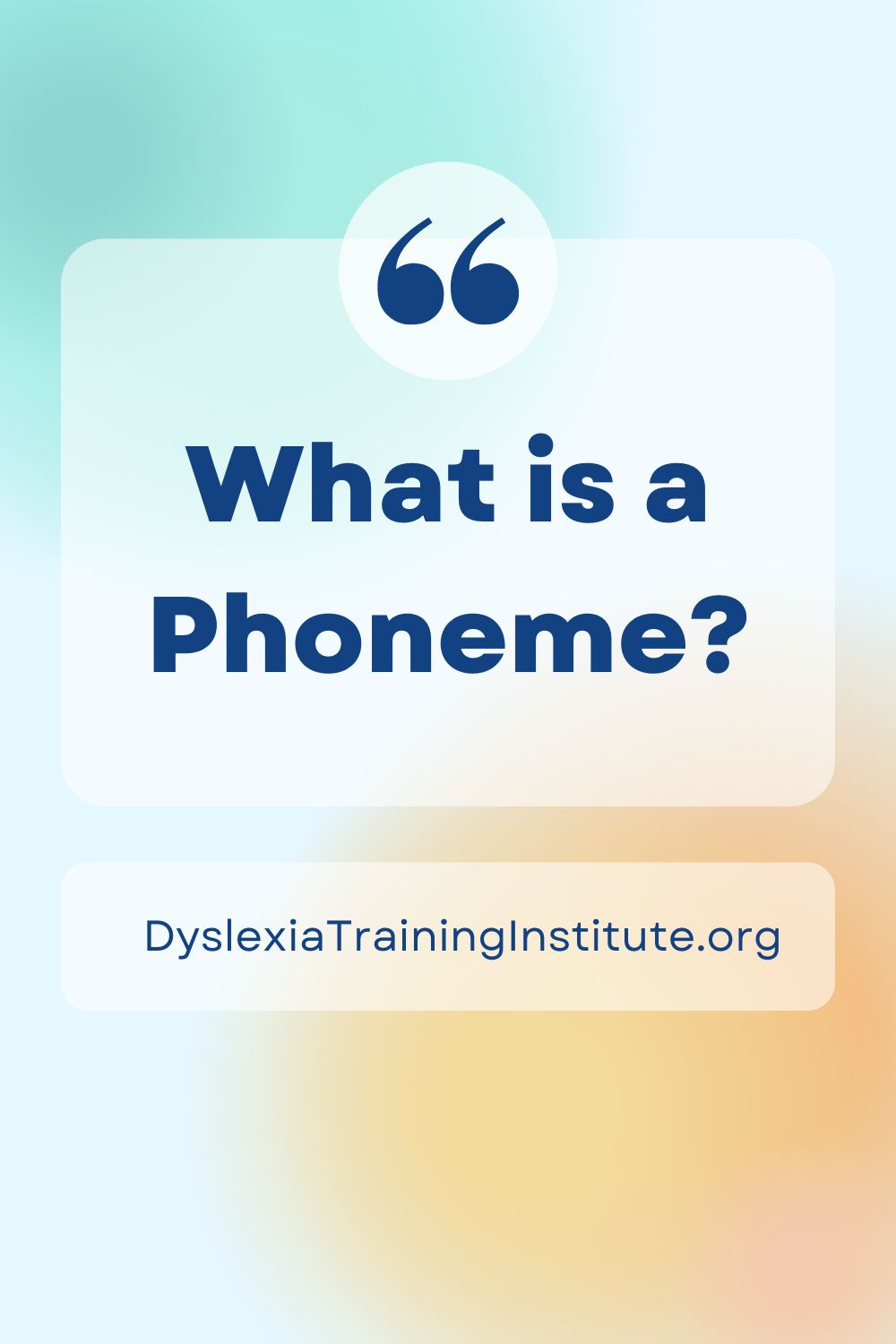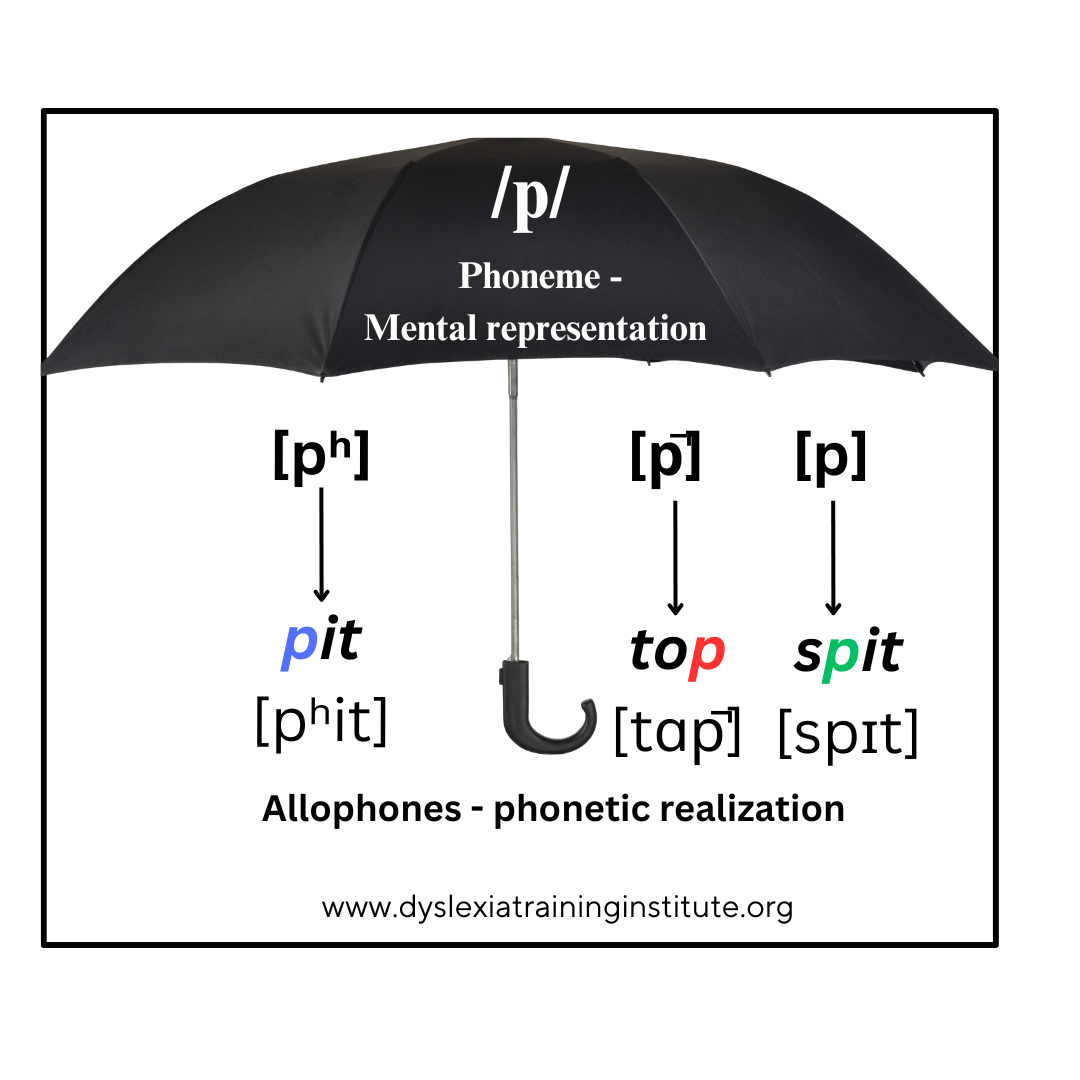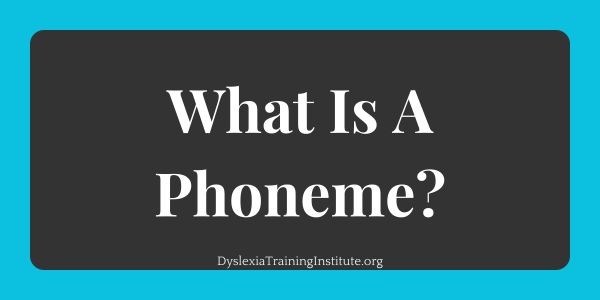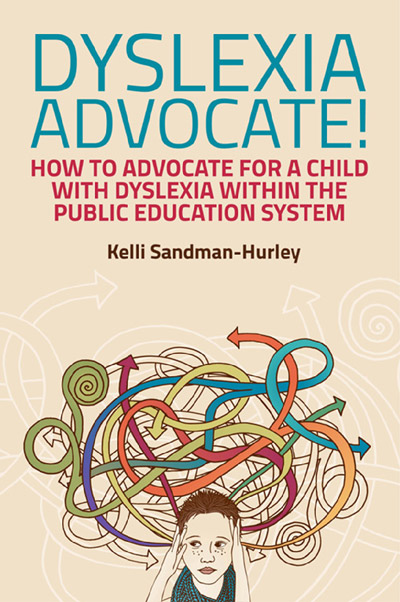A Necessarily Long Blog Post
Kelli Sandman-Hurley, Ed.D.
There’s been quite a hubbub of activity regarding the little ole’ phoneme lately, but little coherent explanation of what it actually is…in terms we can all understand and then make quasi-informed instructional decisions.
In the world of literacy and literacy instruction, we often contend with how to incorporate knowledge from other fields like neuroscience, linguistics, and psychology into our everyday work with struggling students and those who teach them. Sometimes the professionals from these other fields don’t speak education-ease and sometimes that creates a knowledge and implementation gap between what these experts are trying to teach us and what we ultimately come to understand. Additionally, there are educators who talk about linguistics and there are linguists who talk about education – this often leads to confusion and misunderstanding. But we wouldn’t (generally) go to a car dealership to buy a bike, so why do we turn to the education community for information about
linguistics?
Case in point is the recent conversation about phonemes and phonemic awareness. We have no choice but to turn to linguistics to truly understand this concept, even if it challenges our current beliefs and practices. It might cause us discomfort because perhaps we haven’t really understood it, but that is when growth happens. Let’s embrace the uncomfortableness of refining our understanding in an effort to be better.
Full disclosure – I am someone with a doctorate in education who was compelled to go back to school in my old age and earn my degree in linguistics. I did this so that I could be comfortable being both an educator and a linguist (some have suggested I am a wannabe linguist – but I am weirdly ok with that moniker), who teaches educators. I wanted to attempt to bridge that knowledge and implementation gap between education and linguistics. So, without further ado…the phoneme, in language we can all understand.

What is a Phoneme?
What is a phoneme? Phonemes represent the mental concept of a sound in a common language. For the purposes of this post, we will stick to English. Phonemes exist in a contrastive distribution; this means they can appear in the same positions within words, leading to a change in meaning.
Example:
The sounds /p/ and /t/ can both occur at the beginning of words in English, as seen in pill and till. These sounds are distinct, so we understand the words to have different meanings (passing the minimal pair test – words that differ in only a single sound but differ in meaning). As a result, /p/ and /t/ are considered separate phonemes because they contrast with each other when placed in the same positions.
Swadesh (1934, p. 117) defined a phoneme based on its ability to distinguish meaning in minimal pairs: “the phoneme is the smallest potential unit of difference between similar words recognizable as different to the native [speaker]”
What is an Allophone?
Some sounds are in complementary distribution, meaning they never appear in the same positions and, therefore, do not contrast with each other. These sounds are not recognized as separate phonemes but rather as allophones. Allophones are variations of the same phoneme that do not change meaning – this is what we actually pronounce when we speak. The image below attempts to illustrate this point.

Let’s Study It In the Wild
The word pit starts with the phoneme /p/. This sound is produced with a burst of air, making it an aspirated version of /p/, represented as [pʰ]. You can test this by placing your hand in front of your mouth and saying the word, pit; you will feel a puff of air on your hand. In English, all instances of /p/ at the beginning of words are aspirated.
However, the /p/ in spit lacks aspiration (say this in front of your hand again), so it is transcribed as [p]. Both [pʰ] and [p] are allophones of the phoneme /p/ because they do not occur in the same positions and thus do not contrast. [pʰ] is found at the beginning of words, while [p] appears after [s]. Another allophone of /p/ occurs at the end of words, as in top, where the /p/ is often unreleased, meaning the lips close without opening again, represented as [p̚]. This [p̚] will never occur at the beginning of a word. Instead of contrasting, these three variants of /p/ complement
each other, collectively representing the phoneme /p/.
For more information, check out this online course.
Let’s Hear From the Real Experts – the Linguists
I realize at this point, you may still be a bit confused, so let’s take a look at how the real linguists explain it through excerpts from linguistic texts in chronological order:
A phoneme is…
- A class of similar sounds (phones) that contrasts as a class with other classes of sounds to separate meaningful words. (p.250).
- …classes of sounds that are phonetically similar and, as classes, contrast with each other to separate meaningful elements in a language. (p.53)
- …phonemic analysis often requires quite arbitrary decisions about whether to represent the initial sounds in chin and judge as members of independent phonemes or as combinations of phonemes. (p.53)
Source: The American Way of Spelling: The Structure and Origins of American English Orthography. (1990). Richard Venezky
- A group of similar speech sounds signified by an alphabetic letter. (p.404)
- Recent scholarship…has made it clear that ‘phoneme’ is an alphabet-induced concept. (p.404)
- …the discrete nature of alphabetic notation makes the phonemes of a language appear more clearly defined than they actually are. (p.404)
- …letters signify rather than create or pinpoint phonemes lingers on. (p.404)
- …there is evidence that phoneme identification, i.e. the segmentation or normal continuous speech, is facilitated by alphabetic literacy. This observation leads to support the notion that grammatical concepts, including that of the phoneme, are strongly dependent on the written form of language if only because linguists are typically literate. (p.404)
Source: The Blackwell Encyclopedia of Writing Systems. (1999). Florian Coulmas
- The concept of the phoneme became important not only for its relevance to practical problems such as how to represent the pronunciation of dialects and languages that has never been transcribed before, but also as a keystone of modern phonological theory. (p.399)
- …(the phoneme) is now commonly described as a ‘pscyhological’ or ‘intentional’. This definition proposes that the phoneme represents a mental image or intention and that variants or alternate realizations of a single ‘ideal’ or ‘intended’ sound. (p 400)
Source: An Introduction to Phonetics and Phonology, 3rd Edition (2007). Clark, Yallop & Fletcher.
- ‘…for each sound which, being used instead of another, in the same language, can change the meaning of a word’. This notion of a ‘distinctive sound’ is what became widely known in the twentieth century as a phoneme. (p.27)
- …the phonemic principle is implicit in the invention of alphabetic writing. (p.27)
- Each language can be analyzed as having an inventory of phonemes. This inventory may range in size from around a dozen phonemes to nearer a hundred depending on the language.
- The use of the phrase ‘distinctive sound’ above implies that there are other sounds which not change the identity of the word, sounds which are not ‘distinctive’ in this technical sense. Central to the notion of a phoneme is the recognition that many finely distinct sounds can be phonetically identified which do not have the word-distinguishing role of, say, /k/ and /t/ (as in /ki/ and /ti/)….the two varieties of /k/ (key vs. caw) are not ‘distinctive’ in English. (p.27)
- A phoneme can be regarded as an element in an abstract linguistic system, and element that has to be realized in a physical world by an acoustic signal produced by vocal activity. (p.27)
- Variant realizations of a phoneme are known as allophones. (p.27)
Source: Handbook of the International Phonetic Association. (2013).
- A set of speech sounds that are perceived to be variants of the same sound. (p.117)
- Each member of a particular phoneme set is called an allophone, which corresponds to an actual phonetic segment produced by a speaker. (p.117)
- For example, the ‘t’ sounds in words like stop, top, little and kitten ([t], [tʰ], [ɾ], [ʔ]) all belong to single set, a phoneme that we will label with the symbol /t/. …By saying that stop and top each have the phoneme /t/, we are saying that the sounds [t] and [tʰ] are related – that they are the “same” sound. (p.117)
- So, phonemes are abstract psychological concepts, and they are not directly observable in a stream of speech; only the allophones of a phoneme are. It is important to note that any sound that is pronounced, then, is an allophone of some phoneme; the phoneme itself is never pronounced. (p.117)
- Knowledge of phonemes is also revealed in alphabetic spelling systems. For example, English does not separate letters for [pʰ] and [p]; they are both spelled with the letter p.
- For the most part, the English spelling system attempts to provide symbols for phonemes, not phonetic segments. In general, alphabetic writings systems tend to be phonemic rather than phonetic…(p.118)
- …There are multiple ways to represent the same sound (e.g., the [k] sound is written with a <k> in the word kitten but with a <c> in the word cool). What’s crucial here, though, is that both of these spellings represent /k/, and not, for example, the difference between [k] and [kʰ]. (p.118)
Source: Language Files: Materials for an Introduction to Language and Linguistics (2016). The Ohio State University
- The basic unit of phonology is the phoneme which we will define as an abstract mental category of a sound. In actual speech, that abstract mental category may manifest itself in slightly different sounds, however. The exact sounds depends on the phonetic environment in which the phoneme is produced. The various manifestations in speech are referred to as allophones. (p.110)
- For example, speakers of English have stored in their minds a phoneme /p/. However, that /p/manifests itself a [pʰ] (aspirated “p”) or [p] (unaspirated “p”) depending on where it occurs in the word that is spoken. (p.110)
Source: This Language, A River: The History of English (2018). Smith & Kim
- A phoneme is the smallest segment of a spoken word that is distinctive for meaning.
- It is important to note that although we can divide a word like fish into three individual phonemes, it is an artificial process. We do not speak the word fish in three individual, separated segments. It is spoken as a unit, with no pauses in between the segmented pronunciation that we define as phonemes. (p.73)
- Awareness of phonemes develops along with (and is supported by) awareness of graphemes and their functions in written words. (p.73)
Source: Beneath the Surface of Words: What English Spelling Reveals & Why it Matters (2021). Sue Hegland
Now might be a good time to take a few moments to look at your curriculum handbooks, instruction guides and books written by experts (mine included – I have learned a lot along the way and, as a writer, I know I will continue to learn new things, refine my understanding and constantly edit my writing), and think about the source of the information you have come to understand, or misunderstand. So, what do you think? Do we have a phonemic awareness understanding problem? Do we need to adjust how we talk about the phoneme?
My intention here was not to solve the debate of how, when, and if we should spend instructional time on phonemic awareness without graphemes attached. My intention was to give you the information you need to make an informed decision. I will leave up that up to you, but now you can make a choice that is educated by those who understand language better than anyone.






How does all the above explanation help to teach a so-called dyslexic kid?
As mentioned are the end of the post, it wasn’t intended to provide instructional suggestions. It was intended to help those who use this term understand what it actually is. Then they can use this information to make their own instructional decisions.
I think you are right, Kelli that this kind of information does not necessarily inform a specific mode of instruction. However, knowing that what a phoneme “is” or “is not” can provide some understanding as to why it is such a hard concept for some kids to grasp. If we know that a phoneme was a real “object” in the brain then it becomes difficult to understand why some kids get it and some kids don’t. The more we grasp that a phoneme is a very amorphous concept that relies heavily on the sounds around it then it helps to understand why some kids do not understand what it is or why they can’t really hear it. To make use of this knowledge kids have to hear all these ever so slightly different sounds in the context in which they are used, make the choice that all those allophones are actually just slight variations of the “same” sound, and then assign that group to the proper grapheme. What if the groups they create mentally are slightly off. What if they are too big or too small? Then they could not assign the same phonemes to the grapheme they are learning. They will make more mistakes. You used the example the phoneme “p” in your example. For kids with dyslexia, I would guess that most English consonants are not that difficult to hear or group together, but vowels are super hard, particularly if you take dialect differences into account. In some Southern US dialects the vowel sound in ‘pin’ is the same as in the word ‘pen’. But their reading teacher is telling them that these sounds should have two different graphemes. The information they are being taught does not match the grouping they have in their language inventory. The ideas presented in your blog are just a tiny snapshot of the complexity of linguistic knowledge as related to what kids know about the sound system of their language.
Speech and language specialists have always been experts in understanding phonemes. I’m surprised no mention of the field was noted I your research.
You are right. SLPs have a wealth of information in this area. For this article, I was leaning on my own experience in linguistics.